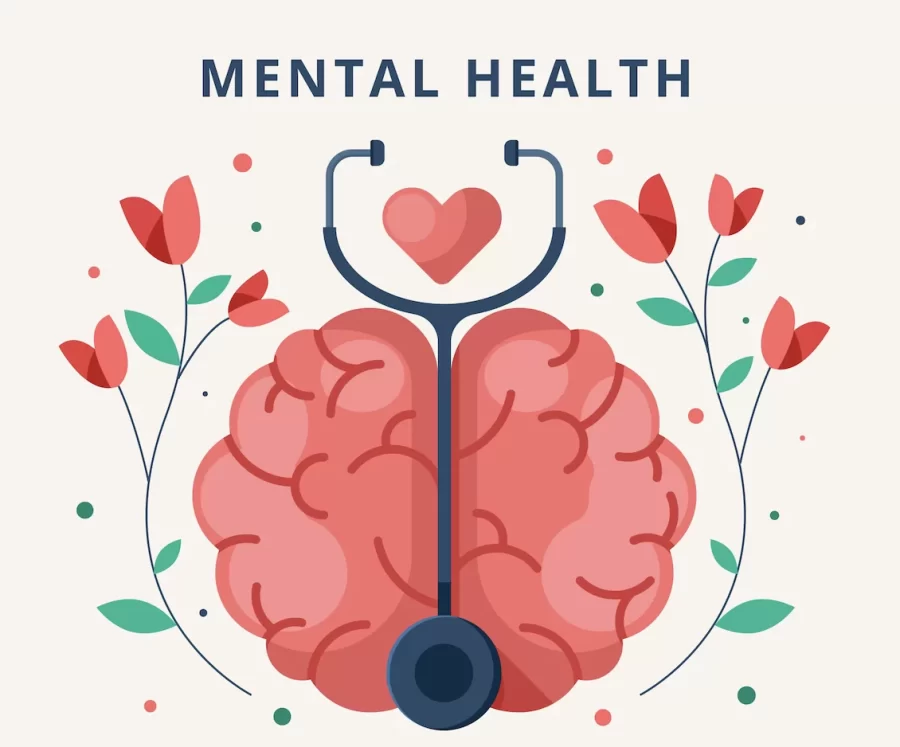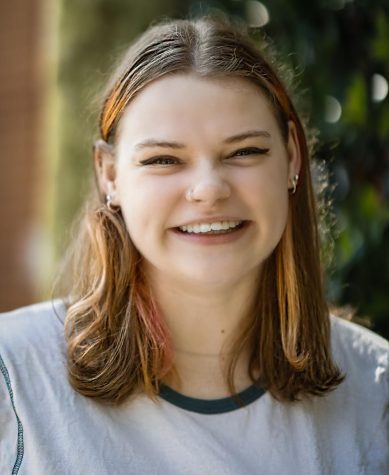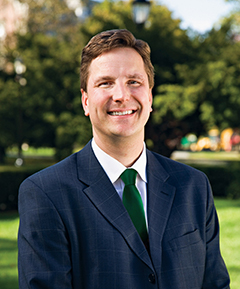College Counseling Through Crisis: COVID-19 and Mental Health
Can colleges combat the mental health crisis among students?
April 13, 2023
As the COVID-19 pandemic evolved into a global crisis, another crisis evolved with it. Statistics provided by the American College Health Association reveal clear evidence that mental health issues were already prevalent on college campuses and are one of the leading obstacles to students’ academic success. Add a global pandemic to the equation, and universities became not only epicenters of positive COVID-19 cases, but of deteriorating mental health conditions as well.
While Amherst College established the first general student health service program in 1861, it would be another 50 years before the first student mental health service program was created. Stewart Paton, MD, established the first student dedicated mental health service program in 1910 at Princeton University which focused on personality development for students. According to an article written by David P. Kraft, MD, for the “Journal of American College Health,” the establishment of such a program was created “in response to an observation that many well-qualified Princeton students were leaving school without completing their courses of study because of emotional and personality issues.”
Despite this major milestone and greater attention being drawn to the importance of mental health, it took several more decades for college counseling services to become a widespread service. It wasn’t until the 1960s and 1970s that such services were implemented in larger numbers and considered standard services for colleges to provide.
During the same time period, to distinguish between their mental health services and other services, some colleges—Stetson included—began to use the acronym CAPS, which means Counseling and Psychological Services. Rob Danzman, a professionally licensed counselor, defines CAPS as a “blanket term used by colleges and universities to describe short term mental and behavioral health services,” which often includes a variety of workshops, counseling, and psychiatric support.
As health education has evolved, so too has the college mental health field, both academically and jobwise. While not all colleges have an accredited CAPS program, many still provide some type of counseling service. But despite the increase in college mental health programs over the last few decades, it appears that there is still a considerable shortage of quality services and access to said services.
A simple Google search will reveal that this shortage has amassed attention from students, national media, and politicians alike. With an Oct. 2018 American Psychological Association report labeling Generation Z as the group “most likely to report poor mental health and seek help,” it is no surprise that there has been a visible trend of increased demand for both more counseling resources and greater access to such resources on college campuses. If it was considered critical for colleges to address students’ mental health needs before, then it might be more crucial than ever with a global pandemic as a compounding factor.
Research has shown the persistent existence of mental health issues among college students. For example, a 2011 American College Health Association report revealed that students reported anxiety and depression as two major impediments to their academic performance. During a 2012 report conducted by the National Alliance on Mental Illness, survey respondents were asked if they had experienced a mental health related crisis during their college experience.
A soaring 73% responded that they had. Respondents explained that their crises had been triggered for a variety of school related reasons, from “extreme feelings of anxiety, panic, depression about school and life; feelings of homesickness, loneliness, and isolation” to feeling “stressed or overwhelmed about course load,” or experiencing a “posttraumatic stress disorder episode triggered by class content.” When asked how their colleges handled their crisis, 35% answered that their colleges were not aware that such a crisis ever happened.
With the surprise introduction of a global pandemic, such mental crises were only exacerbated. With the closing of universities nationwide and potential loss of income due to pandemic related reasons, the Kaiser Family Foundation—a nonprofit organization focused on national health issues— discovered that “a larger than average share of young adults (ages 18-24) report symptoms of anxiety and/or depressive disorder (56 percent),” and that “compared to all adults, young adults are more likely to report substance use (25 percent vs. 13 percent) and suicidal thoughts (26 percent vs. 11 percent).” Additionally, public health researchers have found that there are links between social isolation (which was prevalent and mandatory during the beginning of the pandemic) and loneliness, to poor mental health. In summary, the conditions cultivated during pandemic have only increased national concerns about mental health.
As the crushing weight of a global pandemic constantly lingers, the collective mental health of the nation has taken a beating. As reported by The Harvard Gazette, according to Shekhar Saxena, a professor of global mental health and the former director of the World Health Organization’s Department of Mental Health and Substance Abuse, “COVID is impacting the older age group more, but anxiety and depression are being faced by the young adults much more, which is exactly the opposite of what we’ve seen in some of the earlier crises.” Alarmingly, he said, “it’s the young adults and the children who are being impacted and the effects are going to be long-lasting.”
To understand the reality of the pandemic’s effect on young adults’ mental health, look no further than our own Stetson University. Kieth Sims, the director of Stetson University’s Student Counseling Services provided insight: “Prior to the pandemic…we started recognizing an increase in need, an increase in suicidal ideation—not always active—and it was matching the national norm,” he said.
In recalling the early days of the pandemic, Sims reflects the state of the number of students looking to pursue help from Counseling Services: “I observed that exponentially our numbers were growing. We had our crises prior to COVID, no doubt, but our hospitalizations were spaced out…I started noticing [during] the pandemic that our [number of hospitalizations and students seeking counseling services] were growing. I could look at the schedule and see two weeks out that we were getting filled very quickly. It was just pure demand,” said Sims. It was clear that the need for Counseling Services was increasing rapidly as the pandemic and quarantine set in.
The increasing need among students for Counseling Services as highlighted by Sims did not come without strain on the existing counselors. Luckily, according to Sims, “We have increased our consultation outreach with faculty and/or staff who may have questions regarding mental healthcare for our students,” he said. “As a result of our recent campus crisis, the university has assisted us with bringing in two temporary counselors to help us shoulder the load. This has allowed us to get students in considerably faster,” he added.
Due to the trend of an increasing number of students seeking counseling prior to the pandemic, Stetson’s Counseling Services had already been implementing strategies in an attempt to accommodate the growing number of students and crisis situations. They adjusted their scheduling in various ways, such as adding walk-in crisis appointment slots. These designated time slots allowed students to obtain an appointment more quickly if needed, so the counselors meet with someone in as little as 24 hours during times of need.
Despite the counseling department having their aforementioned strategies, according to Sims, there were complications to transitioning to virtual services. To begin, it was difficult to find a video software that allowed counselors to meet virtually with students without breaking HIPAA laws. Stetson’s Risk Management Team ultimately helped Counseling Services settle on using Microsoft Teams as their platform of choice. The team of counselors, now working primarily from home, had to make sure they were able to access anything from anywhere while still upholding the highest standards of security.
“To me, there were some positives that came from [this transition],” Sims explained. “During my time in grad school, the idea of telehealth was the equivalent of saying Voldemort. Even at that time, being a physically disabled individual, I saw great validity in this. There’s potential in this.”
Sims is not alone in his thinking. According to global management consulting firm McKinsey & Company, provider and consumer attitudes toward telehealth have improved since the onset of the pandemic. The company’s research shows that their consumers continue to see telehealth as an important modality for special care needs, especially when visiting a psychologist or psychiatrist.
Not only does Sims have a positive attitude towards the implementation of telehealth, but university students do as well: “I think [the transition to virtual sessions] was initially a challenge because our students like coming to see us… but as time went on, it became normal,” Sims explained. “We always do a student satisfaction survey every semester and we got some great feedback. One of the questions that I deliberately put on there was ‘did you find the telehealth experience as effective, less effective, or more effective than in person’ and we had an overwhelming [number of students] that found it, at minimum, as effective.” Overall, the transition to virtual counseling was difficult, but the Stetson student body quickly adapted and the department received positive feedback.
Students suffering from depression have also found benefits in the transition to telehealth. “We’ve had some anecdotal experiences that our clients share with us, and one just stands out as one of the most brilliant statements anybody could make,” Sims explained. He related how this student said that they would likely have skipped an in-person appointment in this case, but the virtual telehealth option allowed them to get the help they need without having to leave their bedroom.
Despite some positives for the mental health field emerging during the pandemic, the mental health of the Stetson student body is still suffering: “We saw during the first full school year of the pandemic, it seemed like numbers-wise [we] were the same. The amount of crises did increase, but we noticed the severity of the crises were not all that different from what we had seen before the pandemic,” Sims said. “We rolled into August of this semester and it’s fair to say we have not just broken the number of hospitalizations we’ve done in a semester, we’ve shattered that. To me, it’s like a neon sign flashing, saying that everybody did a good job for about a year… but it seems that as we rolled into this semester, our collective tolerance has been hit.”
While the number of crises has increased this semester, so too has their severity. According to Sims, the sheer mass amounts of students seeking help, and the severity of each case alone has overwhelmed the staff. The numbers were so inundating that a tiered system had to be created to address the crises of each student.
When a student calls, the person who answers the phone will ask them a series of diagnostic questions to decide where each student stands. Students typically give honest answers, but Nicole Currie, the administrative specialist for Counseling Services, has picked up a sort of talent for noticing when students are holding back. Once a student has been assigned a tier, they will be sent a link to fill out the “request for immediate service” form. The questions on the form are kept up to date with the current social and cultural events (such as racially biased incidents), allowing counselors to get a full scope of the students’ situation.
Examples of questions are “Have you experienced a biased incident? Are you considering harming yourself or others? Is your safety in jeopardy?” Then, based on the tier system and the information given to counselors by the student, the counselors will schedule an appointment for the student as soon as possible.
Sims noted that the definition of a crisis is subjective: “What may not be a crisis to you may be to someone else. It’s not for us to determine if that’s right or wrong. It’s for us to validate from their perspective,” Sims added. Counselors create individual plans with each student to make sure the student is safe and to avoid hospitalization if possible. “It’s a very peaceful process,” Sims explained. “Our students will come back and say ‘It was kind of cool to unplug. It was cool to be able to just focus on me.’ Most hospitalizations on campus are voluntary, and involuntary hospitalizations are used as the absolute last measure.”
As evident from numerous amounts of data across the country and from experiences on Stetson’s campus alone, access to mental health resources is more important than ever. “There is no vaccine for mental illness,” Michelle Williams, the Dean of Harvard Chan School said during an online discussion about the pandemic’s lesser-known effects. According to Williams, “It will be months, if not years before we are fully able to grasp the scope of the mental health issues born out of this pandemic. Long after we’ve gained control of the virus, the mental health repercussions will likely continue to reverberate.”
Sims drew attention to the efforts that are being made to implement more training on campus: “We have brought additional QPR training (Question; Persuade; Refer: Suicide Prevention Training) to campus, with most recent occurring on November 1st,” he said. “This training had historically been an in-between semesters thing But, we recognized a need for it to be offered during the semester. We had a great turnout of faculty and staff for this recent training. We look to offer more of these trainings in the spring, including some for students.”
As the repercussions continue to persevere, so will the fundamental changes of mental health services. Fortunately for many students, according to Sims, “Beginning in January 2022 (barring any unforeseen COVID circumstances), we will officially move to our multifaceted service model offering both in-person and virtual counseling options, in addition to our groups. With us nearing exam time for our current semester, as COVID cases have dropped and university vaccination percentages have increased, we are accommodating in-person requests with precautions; though a large number of students are still preferring virtual sessions.”
In light of recent events, a spotlight has been shone on the prevalence of mental health crises, especially on college campuses. With an increase in demand for counseling and related services, Stetson University’s counseling center has changed quite a bit, and may change even more in the future.
*If you or someone you know would like to schedule an appointment with Student Counseling Services, you can call (386-822-8900) or email (counseling@ stetson.edu) during regular office hours. For more information about the process and available resources, visit the Student Counseling Services website.








